Visual Perception
create the illusion of the activity
Through Static Representations
Addition, Subtraction & Transition
Addition and subtraction are often used to structure a form in order to create an interface or visual focal point. The dominant part of elements is the one that stands out and carries more visual weight. Sub-dominant or subordinate elements carry little visual weight and usually carries some feature or functions.
Gestalt
In the simplest terms, gestalt theory is based on the idea that the human brain will attempt to simplify and organize complex images or designs that consist of many elements, by subconsciously arranging the parts into an organized system that creates a whole, rather than just a series of disparate elements. Our brains are built to see structure and patterns in order for us to better understand the environment that we’re living in.
Harmony & Contrast
The principles of harmony and contrast seem completely contradictory, but it is the balance between these two that is vital to the success of any work of art.Harmony is the visually satisfying effect of combining similar or related elements–Adjacent colors/Similar shapes/Related texture. Harmony in design helps bring about unity. All harmony and no contrast, however, can become monotonous. A balance must be struck between areas of harmony and areas of contrast.
Adding contrast creates a focal point, which grabs an audience’s attention. Contrast can be created by size, weight, position, color, shape, and style.
Unity & Variety
Unity can give a sense of entirety or wholeness to a product family or equally break it up and create a sense of variety or disharmony.Using similar elements or material to apply unity to your work is a strong way to bring a brand concept to life
Stability and Gravity
Larger footing brings more stability. Intentionally creating a small footing or having a recess at the base will bring up the center of gravity, visually, which will bring a sense of grace or elegant to an object. (think of high-heels)
less supporting area
divide the mass
reduce the supporting area
divide the mass & reduce the supporting area
adjust the center of gravity
reduce the supporting area
f3abf43e655451c1660c47c37dfc75f4
divide the mass & less supporting area
increase the support area
divide the mass
adjust the center of gravity
reduce the supporting area
divide the mass
color and division
color and division
divide the mass
f80c48f737c69c419ed65bf2f82380da-2
67fc987a206314d1eec40f228a957e3d
a4e3c2404ff5508deb5955296ed4a1f2
Scale & Proportion
Proportion is the visual size and weight of elements in a composition and how they relate to each other.
The book’Geometry of Design’ a mathematical explanation of how art works presented in a manner we can all understand.
Symmetry & Balance
Elements can have different visual weights dependent on their size, shape or color. Please keep in mind that it isn’t necessary for a design to be symmetrical in order to be considered balanced, an asymmetrical design can also be balanced too. Asymmetrical balance is where the weight of design language is not equally distributed (but is still visually balanced). Asymmetrical designs are bolder and can bring real visual interest.
Bioinspiration and Visual Analogy
Well-designed image reveals the mind’s intuitive leaps to connect known with unknown experience. Using analogy helps users to better understand abstract concepts and to fully exploit their capacity to retrieve previously acquired knowledge
Visual Language Trends
An aesthetic design trend is composed of elements such as form, proportion, color, materials, finish, texture and typography that create a distinct visual personality.
CMF & Design
CMF stands for Color, Material, and Finish. CMF designers typically work alongside industrial designers and product design engineers to ensure that a product’s chromatic and tactile identities are consistent. On smaller teams, an individual industrial designer might take on this role. Different materials have their own characteristic traits, which can influence the overall design language.
